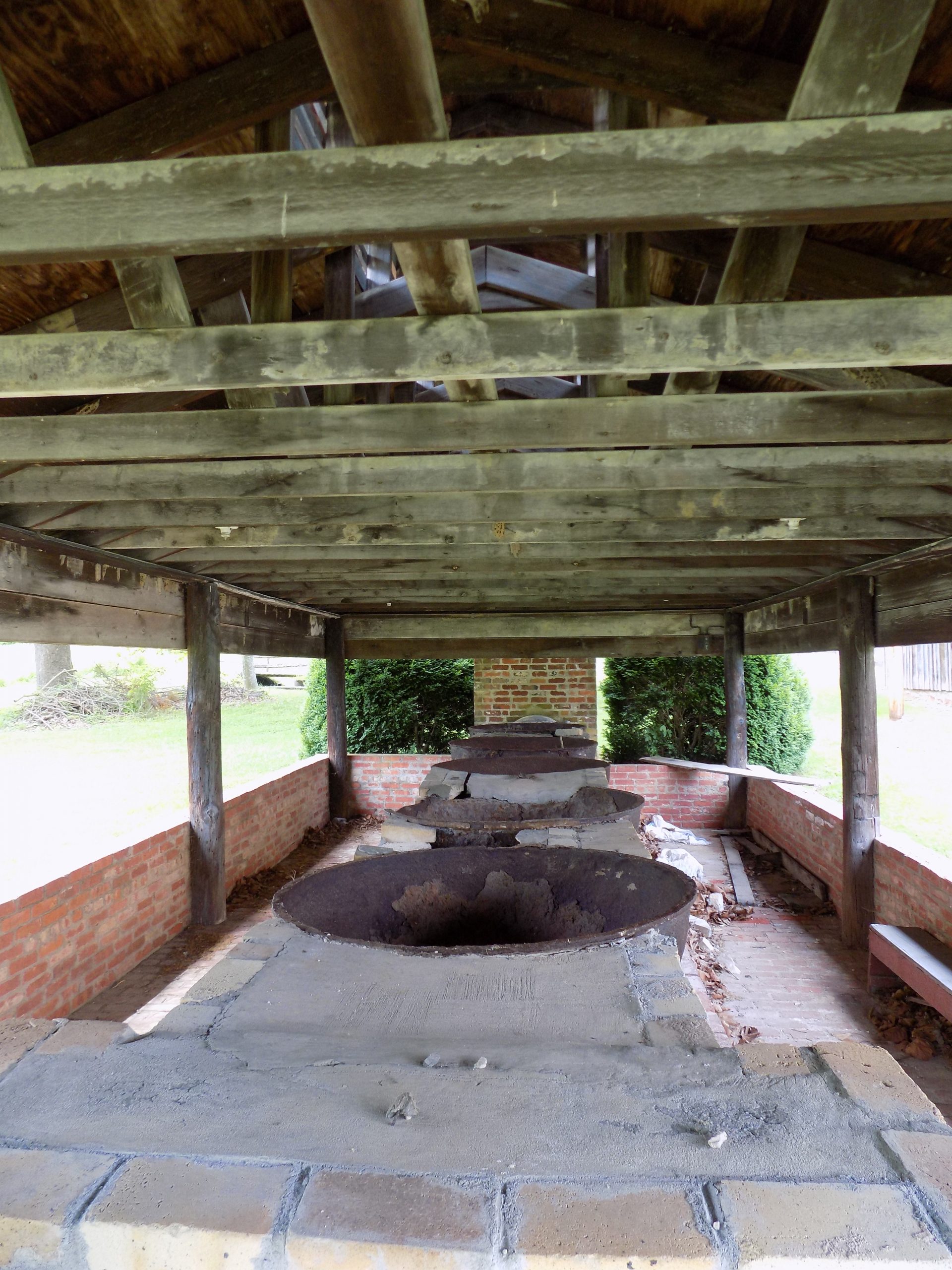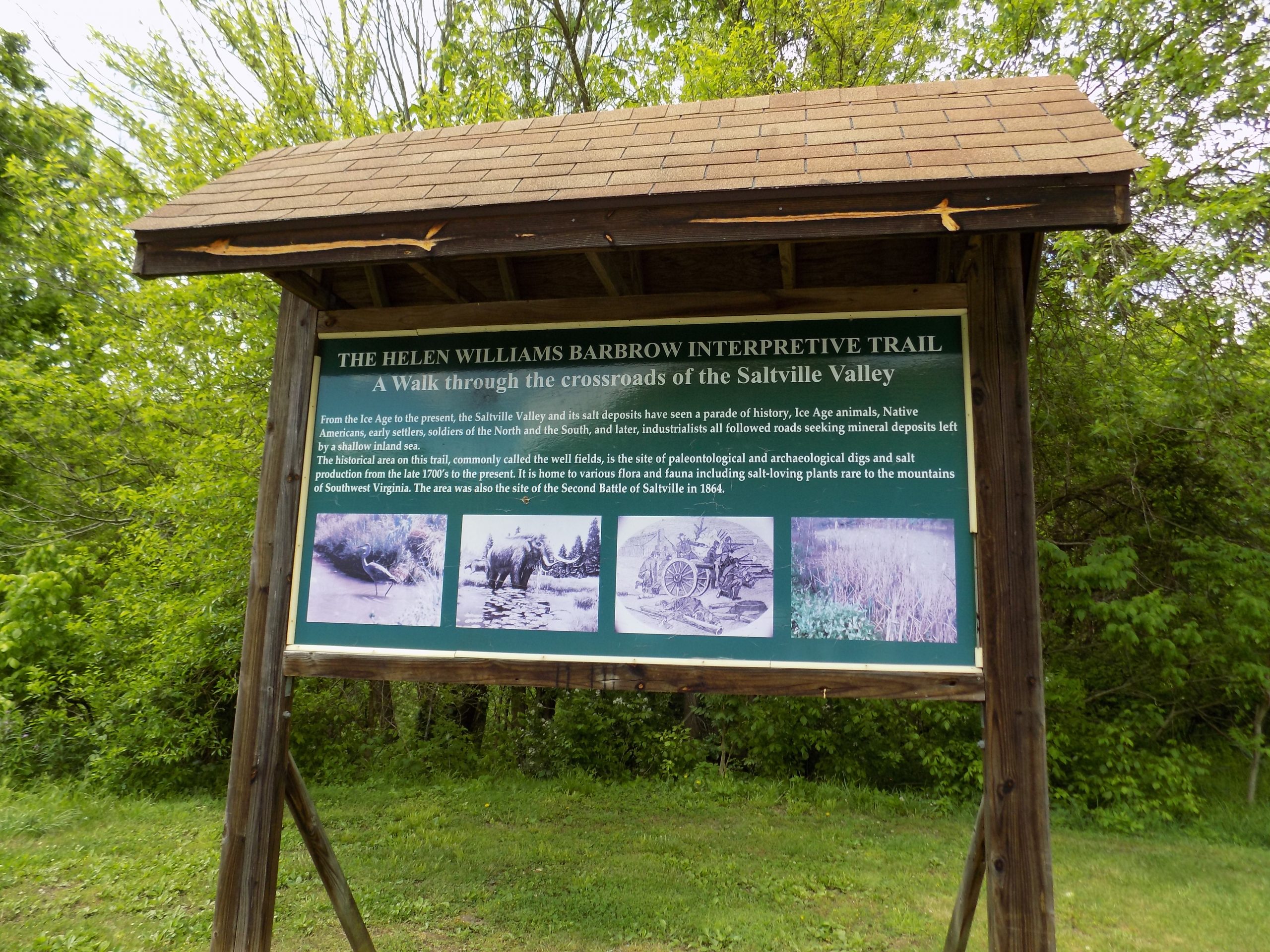ECW Weekender: Saltville, Virginia (Part 3)
 Today, we’re wrapping up the tour notes for Saltville and focusing on the second battle sites and “salt park.” Part 1 and Part 2 are also available.
Today, we’re wrapping up the tour notes for Saltville and focusing on the second battle sites and “salt park.” Part 1 and Part 2 are also available.
The Second Battle of Saltville happened December 20-21, 1864, and was directly triggered by the Federal defeat in the first battle earlier in the year.
 Producing four million bushels of salt in 1864, the community tucked in the mountains near the salt ponds had earned the name “salt capital of the Confederacy.” Why was salt so important? (After-all, we usually hear about “reduced sodium diets” these days.) In two words: food preservation. Refrigeration was not used during the Civil War and moving an army’s supplies from ice-house to ice-house made no logistical sense. An easy, centuries-old way to preserve foods—especially meats—was salting. The Confederacy had decided the saltworks were vitally important and counted them on the levels with “war industry” like munitions factories and foundries.
Producing four million bushels of salt in 1864, the community tucked in the mountains near the salt ponds had earned the name “salt capital of the Confederacy.” Why was salt so important? (After-all, we usually hear about “reduced sodium diets” these days.) In two words: food preservation. Refrigeration was not used during the Civil War and moving an army’s supplies from ice-house to ice-house made no logistical sense. An easy, centuries-old way to preserve foods—especially meats—was salting. The Confederacy had decided the saltworks were vitally important and counted them on the levels with “war industry” like munitions factories and foundries.
Part of the Union armies’ plans in 1864 included destroying the supply network and industries in the South, making it harder for the Confederacy to support armies in the field or civilians on the homefront. Saltville made the list of desired objectives for destruction.

The Confederates had successfully held off the attack in October 1864, but in December a more skilled Federal cavalryman approached the community: George Stoneman. With approximately 4,500 troops, he headed into southwestern Virginia, aiming for the saltworks again. He inflicted defeat on the Confederates at Marion, Virginia on December 17 and 18, then pushed on toward the objective.
Meanwhile, Confederate Colonel Robert Preston readied the 500 men at Saltville and waited for the reinforcements arriving with General Basil W. Duke. (They arrived in time to see Saltville in flames. Spoiler.)
Arriving near Saltville, the Union cavalrymen advanced from the south and west, along Glade Spring Road—a different approach than the one tried weeks earlier. A brigade under General Alvan C. Gillem attacked first, followed by the rest of the Federal troops. The two attack columns overwhelmed the Confederate defenders, and Preston pulled his men back.
The Union troops wrecked the saltworks, destroying 1/3 of the boiling kettles. Evaporating sheds went up in flames. Portions of the Virginia and Tennessee railroad were destroyed. And then the soldiers departed, thinking they had successfully crippled the saltwork.
But…some of the vital equipment had previously been stashed or buried when the residents heard the Yankees were coming. Also, the Union troops did not actually damage the salt wells. With the remained 2,000 boiling kettles, Saltville went back into production, though not at the volume seen previously during the war.
Today, (well, at least when we can all travel again) you can visit the site of the Second Battle of Saltville.
Start at Salt Park, located off West Main Street. (Go left on Main Street if leaving the museum; right if pulling out of Elizabeth Cemetery). Salt Park is marked and is located between Lake Drive and Elmwood Drive.
Here, you’ll find large kettles, a furnace, and interpretive signs, explaining the process of mining and boiling salt. Keep in mind that each Confederate state had a saltwell and produced specifically for that state—part of the states rights concept.

Leaving Salt Park, head toward town and in about a block veer right onto Lake Drive. Make a left into the parking lot for Helen Williams Barbrow Interpretive Trail. Follow the trail and use the interpretive signs to learn more about the Second Battle of Saltville and the troops. Basically, a Confederate skirmish line stretched across the area you’ll walk in the first part of the trail, facing back toward Salt Park since the Union troops advanced from that direction. So, yes, technically, you’re on the battlefield! Follow the trail as far as you wish, noting the topography and considering the limited defensive protection it would have altered. (You’ll also stroll by some salt ponds which are great places to see wildlife.)
And that concludes our three part trip to Saltville, Virginia. Stay well, be safe, and keeping making plans to travel to historic sites when we can hit the road again!


Great article, Sarah Kay. As usual you acquaint me with a phase of the War I never thought of.
Good stuff Sarah Kay.
There was another place the Confederacy got some of its salt from… and that is Avery Island, Louisiana or Petite Anse Island as it was known at the time. People figured out that there was salt in the ground there in 1861 or 1862, and the plantation owners started to mine it. It’s proximity to the coast meant it wouldn’t remain in Confederate hands for long and was taken during Nathaniel Banks’ Bayou Teche campaign.
As you probably know, today Avery Island is one of the world’s largest salt mines; it’s where the Tabasco Company is located; where Tabasco sauce comes from; is also where part of the national oil reserves are stored, or maybe that is the next couple of salt domes over from Avery Island; and where the rodent Nutria were introduced into Louisiana’s fauna.
It’s a cool place to visit if you ever get down to south Louisiana. A Union flagged vessel from the Teche campaign actually sits at the bottom of the Teche not far from Avery Island at New Iberia.